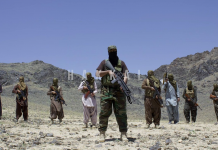New Delhi (NVI): With many Indian cities already battling the menace of pollution in the air, another environmental crisis is fast aggravating under ground— Water shortage. India accounts for 18% of the world population whereas it has only 4% of the world water resources, that too with large temporal and spatial variability, according to government sources.
In addition, water scarcity in India is expected to worsen as the overall population is expected to increase to 1.6 billion by year 2050.
According to a research report, of the 1,869 trillion liters of water reserves, only an estimated 1,122 trillion liters can be exploited due to topographic constraints and distribution effects. The demand for water has been increasing at a high pace in the past few decades.
“From the period of 1960 to 2013, India’s per capita availability of water has reduced from 4,100 to 1,472 cubic meters, thereby shifting India’s status from being water adequate to water-stressed, said the report titled Quantifying Potential Impact of Water Shortage on Different Industries in India: Identifying Go-No-Go Regions for New Capex & Industrial Clusters that Might Face Existential Crisis”.
However, National Institute of Hydrology pegs India’s utilizable per capita water availability at just 938 cubic meters in 2010 and expects this to drop to 814 cubic meters by 2025; Annual per capita water availability of less than 1,700 cubic meters is considered a water-stressed condition, whereas annual per capita water availability below 1,000 cubic meters is considered as a water scarcity condition, the report said.
The water situation in India has caught the attention of World Bank too, which is collaborating with Indian government to contain the problem and achieve sustainable development and management of the country’s water resources.
“Water is a key strategic resource for our country. The situation gets further aggravated when we need to meet the challenge of conflicting sectoral demands. Thus, there is an urgent need to manage precious water resources in a judicious manner,” said an official statement.
Ministry of Jal Shakti (MOJS) is implementing a number of schemes in this regard with active participation of the states. The National Hydrology Project (NHP)is one of the such important schemes. This Central Sector Scheme is being implemented by Department of Water Resources, River Development and Ganga Rejuvenation with support from World Bank.
The project has a coverage on Pan India basis and intends to set up of a system for timely and reliable water resources data acquisition, storage, collation, management and dissemination. NHP would also be a platform to develop tools and systems for informed decision making in field of flood management, reservoir operations, drought management, etc.
The project also seeks to build capacity of the State and Central sector organisations in water resources management through the use of Information Systems and adoption of State-of-the-art technologies. To achieve the objectives as above, NHP contemplates to promote international level knowledge exchange, solutions exchange and networking necessary to realize these changes.
In this regard, a series of annual Conferences with the theme Sustainable Water Management are being organised under NHP. First such conference was hosted in December 2018 by BBMB at Chandigarh. The second conference is being hosted during November 6-8, 2019 by Water Resources Department, Government of Maharashtra at Pune with the active support from National Project Monitoring Unit, NHP.
International Experts from a number. of countries such as Australia, U.S., U.K., Netherlands, Canada, South Korea, European Union, Germany, Thailand, Sri Lanka and Nepal are participating in this Conference apart from Experts from the World Bank and International Commission on Irrigation and Drainage. The Event is likely to be attended by more than 500 International and National delegates.
-nad











